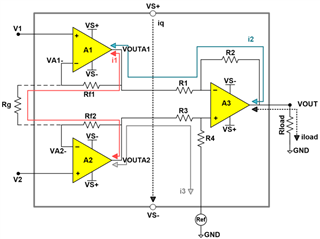Other Parts Discussed in Thread: OPA4187
Hi Team,
Can you estimate how much current INA823, REF50xx for amplifying a force sensor signal and 2 low pass filter OPAmps (OPA4187) need in total? Is 100mA from an LDO enough?

Thank you,
Franz
This thread has been locked.
If you have a related question, please click the "Ask a related question" button in the top right corner. The newly created question will be automatically linked to this question.
Hi Franz,
Thanks for your post, I can help you.
Kai is correct, without a full schematic outlining all voltages, we cannot calculate the total current consumption. For instance, in the case of the IA alone, a common mistake is understanding the current consumption. In many instances, a user will set up a 3 amp IA and rely on the quiescent current specification of the datasheet to determine the current consumption of the circuit. However, this is not the case. The total current consumption of the IA is the sum of all load currents in addition to the quiescent current (iq) and any loading on Vout through iload. Here is a diagram of all the currents in a typical 3 amp IA:

Current i1 is the current flowing between VOUTA1 and VOUTA2 through Rf1, Rg, and Rf2 and back through the power supplies.
Current i2 is the current flowing between VOUT and VOUTA1 through R2 & R1, back through the power supplies.
Current i3 is the current flowing between VOUTA2 and Ref through R3 & R4 and back through the power supplies.
Make sure to account for all these currents when managing your power budget. We have a calculator tool called IA Current Consumption housed in the Analog Engineer’s calculator:https://www.ti.com/tool/ANALOG-ENGINEER-CALC
I just requested to get the INA823 added to the tool (this is a newer part). It should be updated by early-next week.